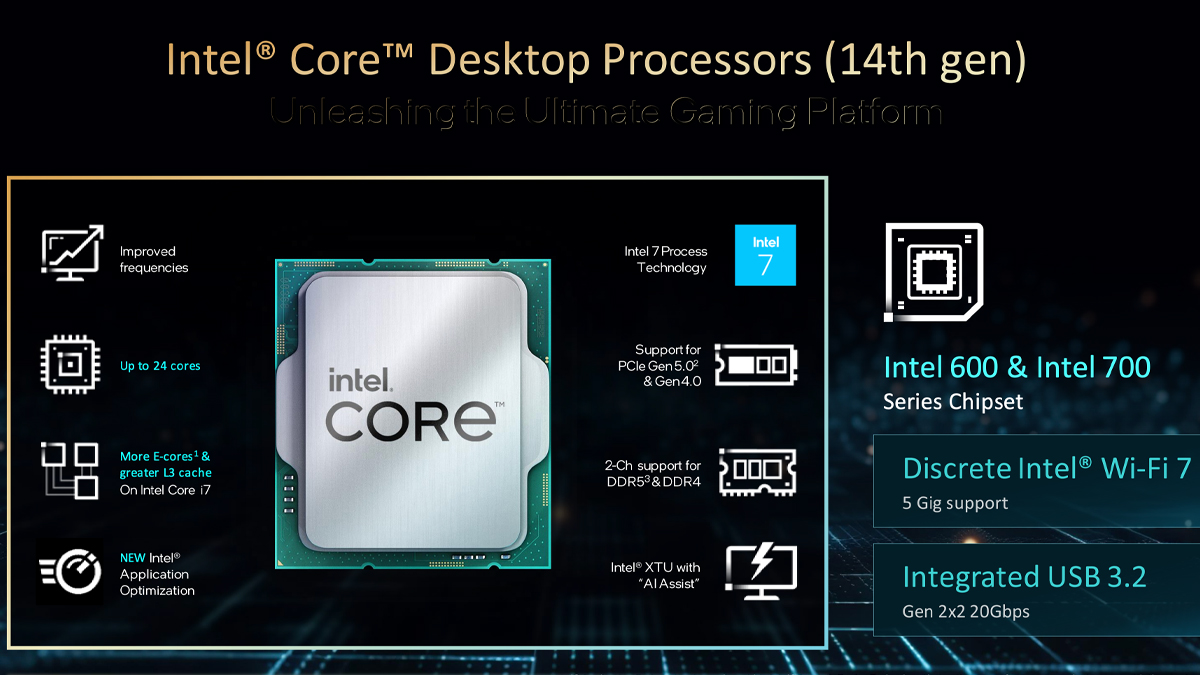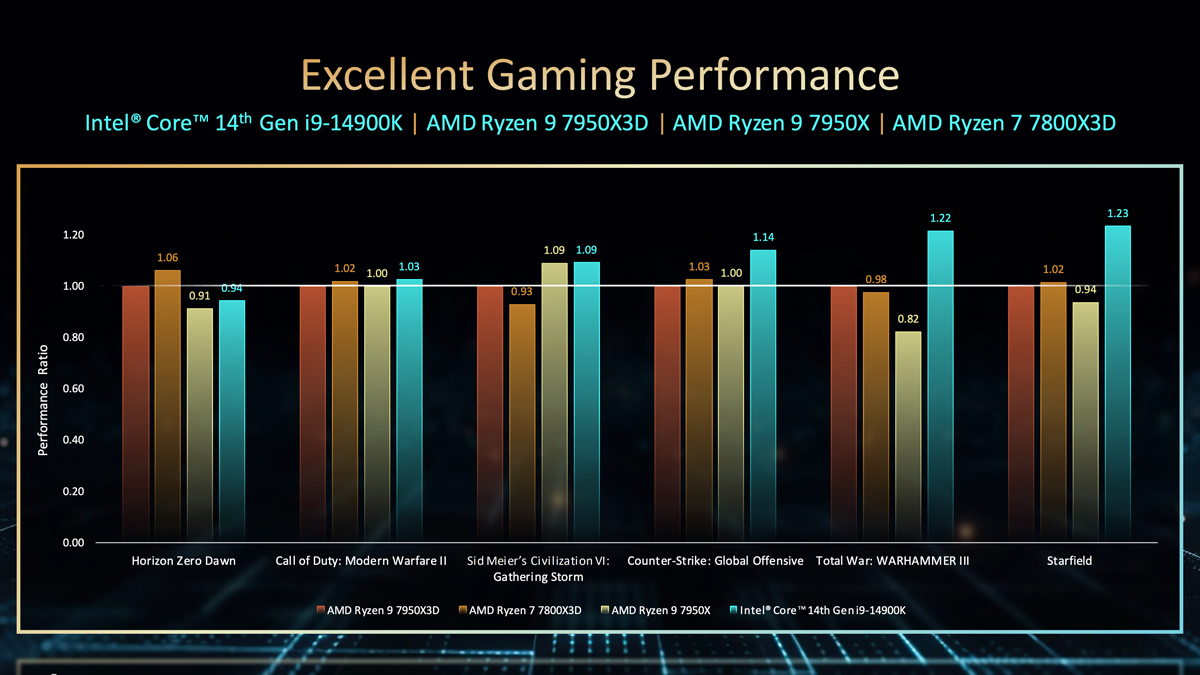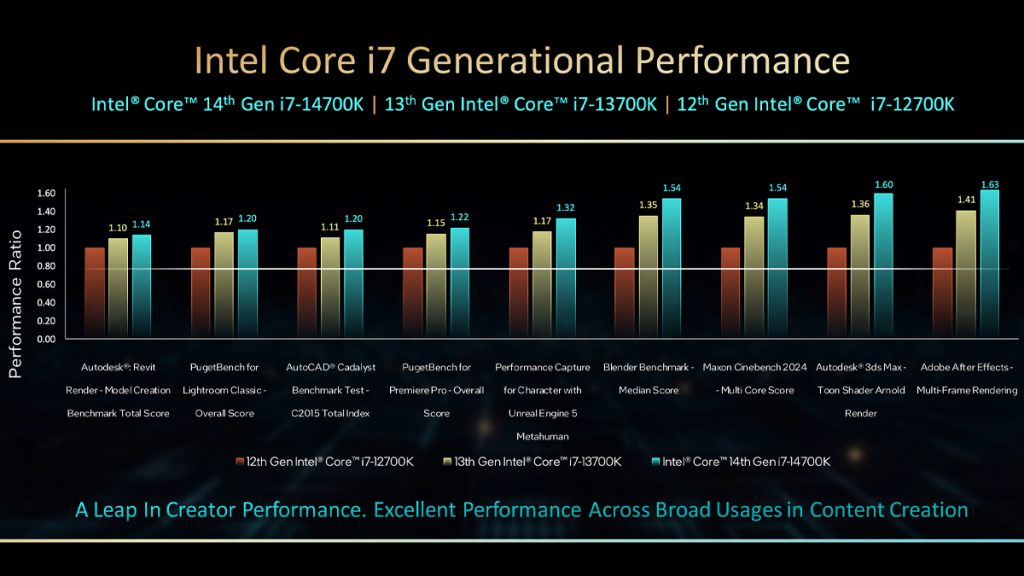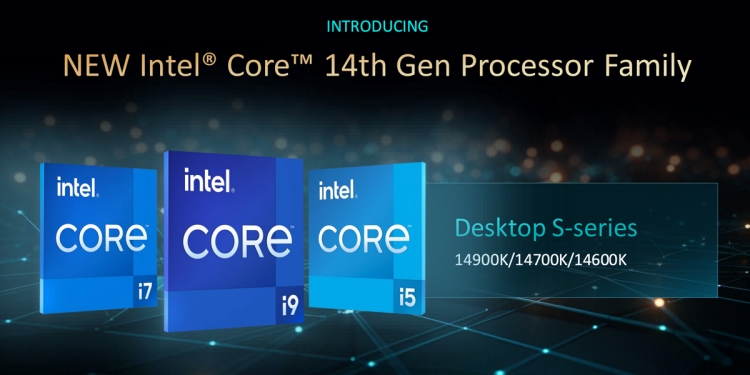Intel has officially launched its next generation of desktop processors, the 14th Gen Intel Core lineup. However, one thing to note is that while Intel did also previously debut their new Meteor Lake architecture, 14th Gen Intel Core processors for the desktop side will be using a refresh of last year’s 13th Gen chips, making it a Raptor Lake Refresh. Nevertheless, Intel did optimise these new processors a fair bit, with the top tier Intel Core i9-14900K hitting 6GHz speeds right out of the box.
This initial launch of the 14th Gen Intel Core lineup will see three main processor options, each of which are unlocked allowing you the option to overclock them if you want. You’ll also find an accompanying version of each processor without integrated graphics’ you’ll be able to tell them apart as the ones with no iGPUs have an -F suffix, or in this case, the -KF suffix as they’re also overclockable. Built on the Intel 7 process, they’ll use Intel 600 and 700 series chipsets, with support for both DDR4 and DDR5 RAM, PCIe Gen 5, USB 3.2 Gen 2×2 and Thunderbolt 5 in the future too along with Intel UHD 770 integrated graphics.

At the very top of the product stack is the Intel Core i9-14900K, which features 8 of their P-cores running at 3.2GHz base clocks with speeds of up to 6.0GHz out of the box, albeit you will need to keep the processor fairly cool for that to happen. Accompanying that is 16 E-cores running at 2.4GHz base clocks with boosts up to 4.4GHz, and a total of 32 threads. It also has 36MB of L3 cache, 32MB of L2 cache and will use up to 253W of power at full load. Intel were quick to call it the ‘world’s fastest desktop processor’, even though technically their previous Intel Core i9-13900KS was also able to hit 6.0GHz out of the box. They also claim up to 23% better gaming performance compared to the AMD Ryzen 9 7950X3D, though it does trade blows with it across different titles.


Moving down the product stack, we’ll find the Intel Core i7-14700K, which has 8 P-cores too, running at 3.4GHz base clocks with boosts of up to 5.6GHz. That’s alongside 12 E-cores running at 2.5GHz base and up to 4.3GHz boost speeds for a total of 28 threads, together with 33MB of L3 cache, 28MB of L2 cache and a max turbo power of 253W too. It’s the Core i7-14700K in particular which, when compared to its direct predecessor, has the biggest gains in the 14th Gen lineup, as Intel has increased the E-core count to 12 compared to the Core i7-13700K’s 8 E-cores. This allows it to have perhaps the biggest generational jump against Core i7 chips of yesteryear.

Lastly, we have the Intel Core i5-14600K. It comes with 6 P-cores running at 3.5GHz base clocks boosting to 5.3GHz speeds, along with 8 E-cores running at 2.6GHz base and up to 4.0GHz boost clocks. It also has 20 threads, 24MB of L3 cache, 20MB of L2 cache and a lower max turbo power of 181W, though it still comes with a rated base power of 125W, the same as the other two processors above it.
Pricing-wise, Intel has pretty much kept the same price tags as the 13th Gen lineup when it launched, which makes sense considering that it’s essentially a refresh of last year’s lineup. Here’s how much they’ll cost:
- Intel Core i9-14900K, 8 P-cores + 16 E-cores – USD589 (~RM2,794.22)
- Intel Core i9-14900KS, 8 P-cores +16 E-cores – USD564 (~RM2,675.62)
- Intel Core i7-14700K, 8 P-cores + 12 E-cores – USD409 (~RM1,940.30)
- Intel Core i7-14700KS, 8 P-cores + 12 E-cores – USD384 (~RM1,821.70)
- Intel Core i5-14600K, 6 P-cores + 8 E-cores – USD319 (~RM1,513.34)
- Intel Core i5-14600KS, 6 P-cores + 8 E-cores – USD294 (~RM1,394.74)
The 14th Gen Intel Core desktop processor have already been made available at all parter retail outlets and OEM parters worldwide. For more about Intel’s new desktop processors, you can check out its product page on their website here.








